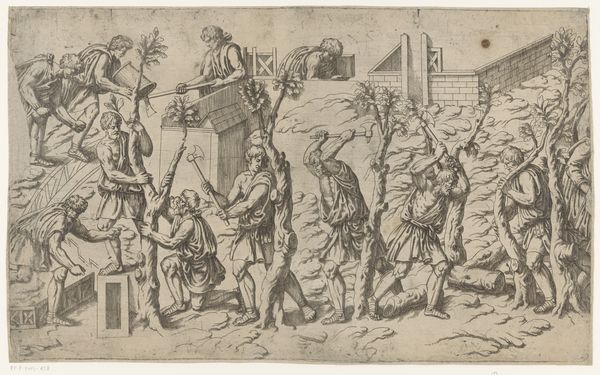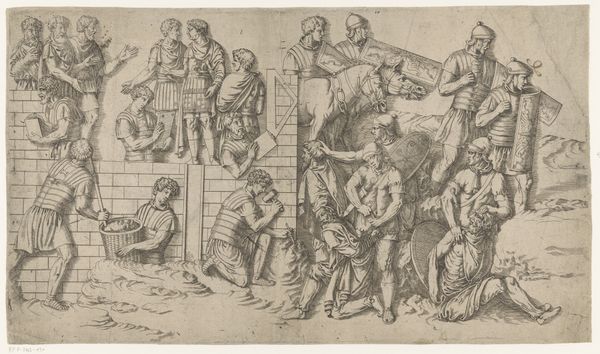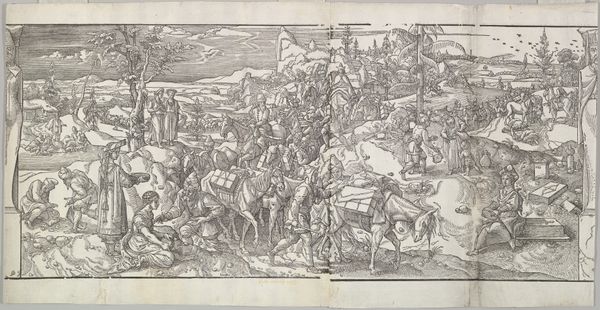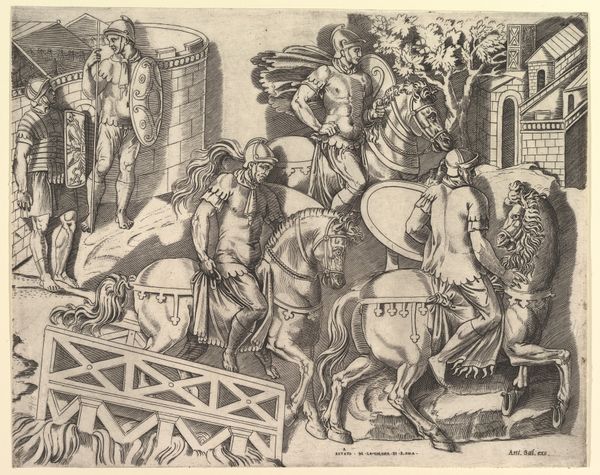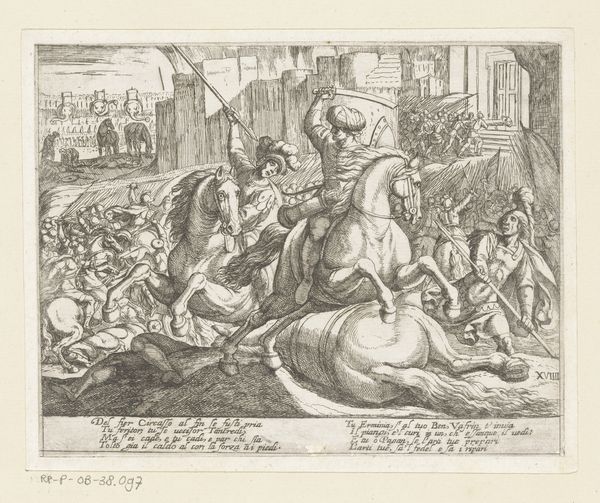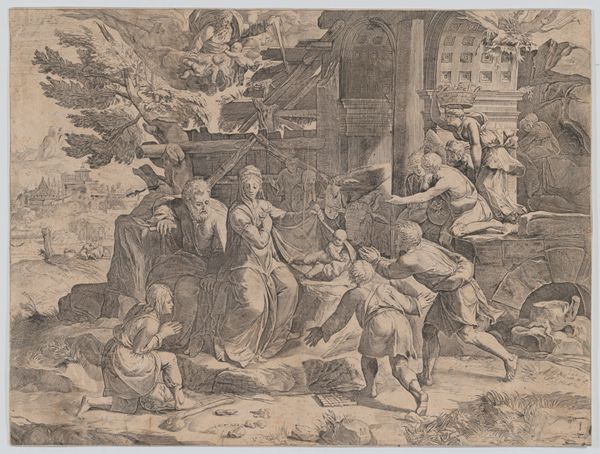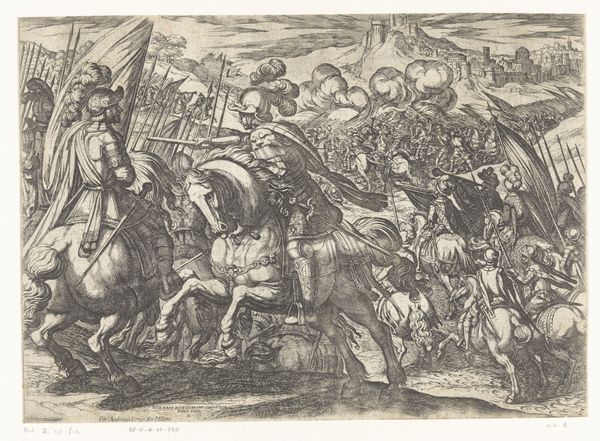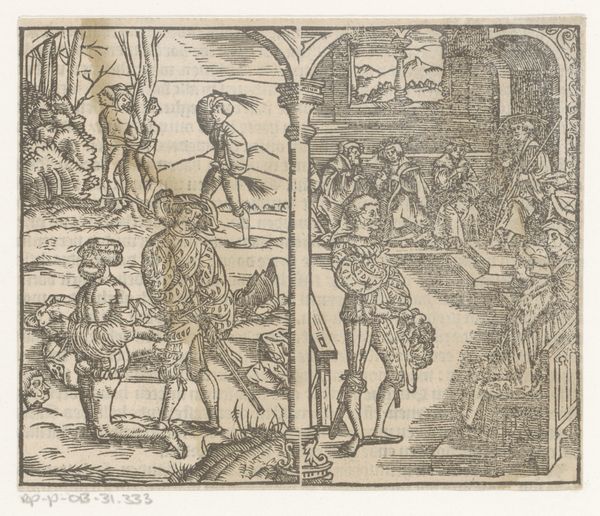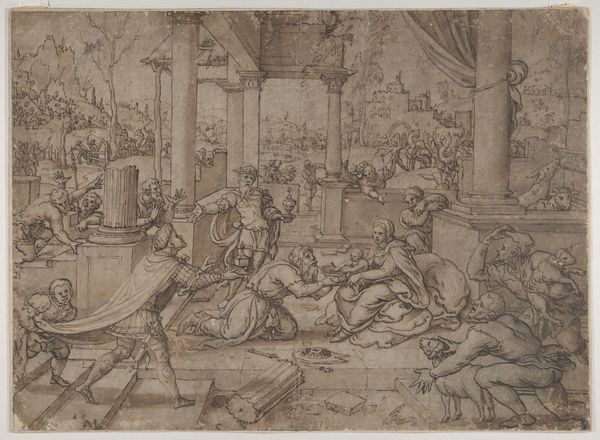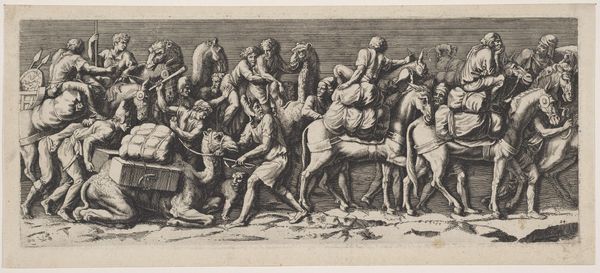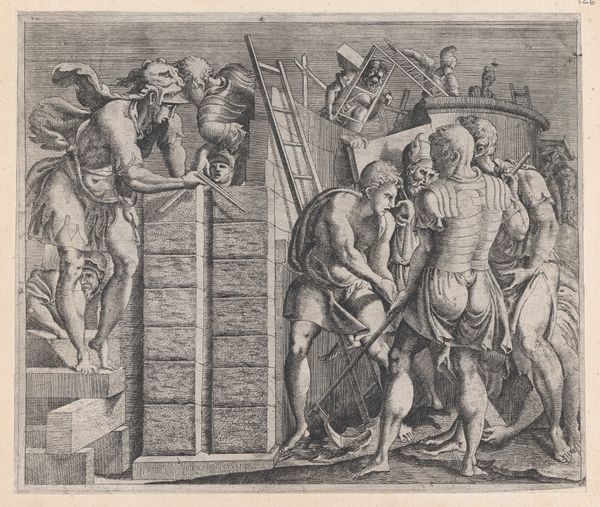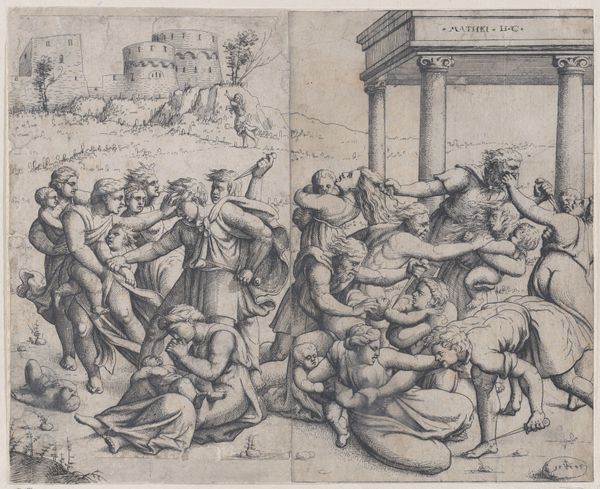
print, engraving
# print
#
pen sketch
#
war
#
figuration
#
11_renaissance
#
pen-ink sketch
#
line
#
pen work
#
history-painting
#
engraving
Dimensions: height 272 mm, width 457 mm
Copyright: Rijks Museum: Open Domain
Editor: This engraving by Antonio Fantuzzi, titled "Scène uit de Dacische Oorlogen" or "Scene from the Dacian Wars," dates back to the mid-16th century. The detailed linework depicts a procession of soldiers and horsemen. What historical context can you provide for a piece like this, particularly in relation to its potential political or social implications at the time? Curator: It’s fascinating how Fantuzzi uses printmaking to engage with historical narratives. Prints in the Renaissance weren’t just decorative; they were powerful tools for disseminating information and shaping public opinion. Think about it: this scene, depicting Roman military campaigns against the Dacians, evokes ideas of power, empire, and military strength. How might that resonate with the patrons of that time? Editor: That's a great point. Considering the political landscape, perhaps it served as a reminder of past glories or even a subtle commentary on contemporary political struggles? It seems less about strict historical accuracy and more about leveraging history to promote a particular idea. Curator: Precisely. We must consider how institutions like courts or wealthy families commissioned and consumed art to craft their image and influence society. History paintings were a visual language and helped craft a legacy, real or imagined. Who would benefit from visually associating with Roman military strength and virtue at that time? What did power mean? Editor: I never thought about history being such a flexible visual medium, used to support contemporary views. Thanks for broadening my perspective. Curator: It’s all about asking ‘who benefits?’ and then finding the story being visually told! Looking at art through that lens helps you unravel much.
Comments
No comments
Be the first to comment and join the conversation on the ultimate creative platform.
